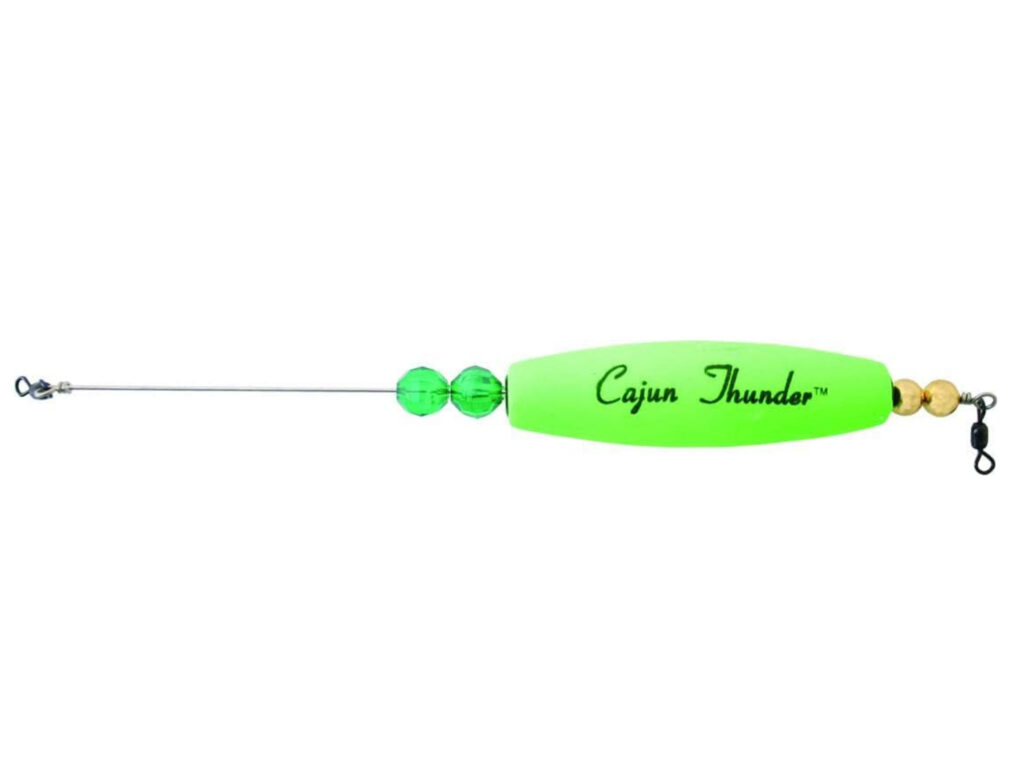Some things never change, like a popping cork’s ability to produce strikes when all else fails. But popping corks have been around a long time, and it’s easy for anglers to overlook their plain looks and simplicity, distracted by the range of revolutionary rigs and attractive new lures that seem to come on the scene just about every year.
I was as guilty as anyone of forgetting about these venerable fish producers. And when friend Keith Goodin pulled one out after the tide went slack one calm afternoon in Buras, Louisiana, I crinkled my nose and went on casting a flashy spoon. I soon remembered that fishing with popping corks is downright deadly.
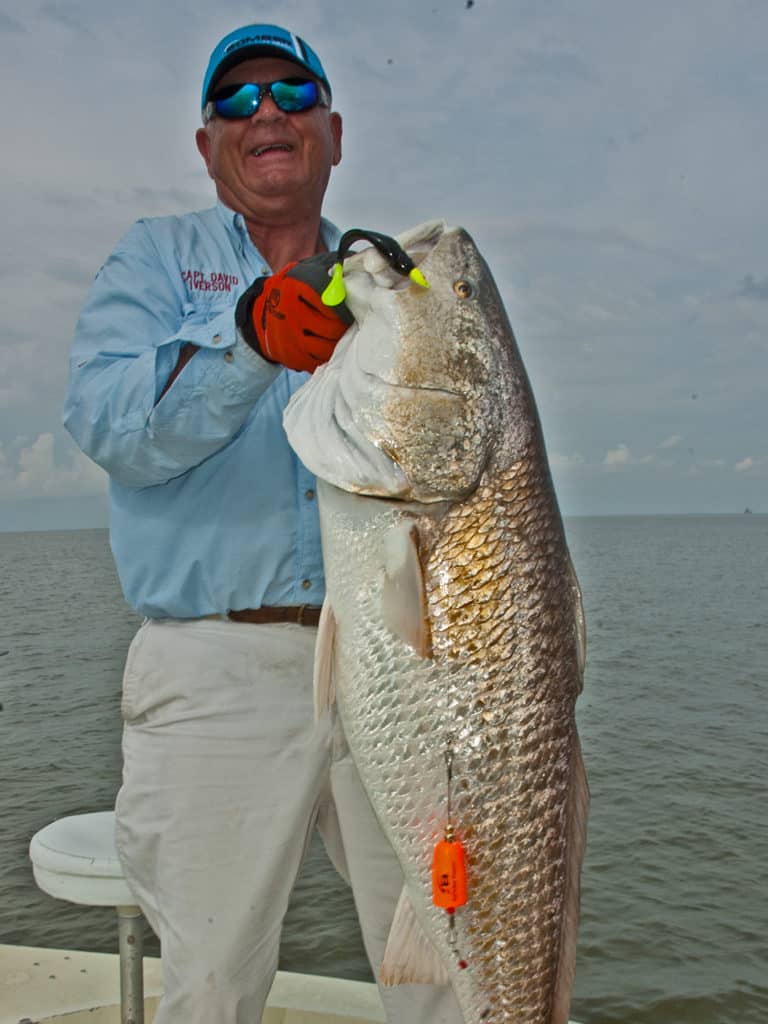
Fishing Corks for Redfish, Speckled Trout and Others
We’d hammered redfish and trout all morning, but once the water stopped moving and the surface slicked, it was a long time between strikes. That’s when Keith tied on a popping cork 3 feet above a 3/8-ounce jig head rigged with a plastic grub. And for the better part of an hour, he caught fish simply by chugging the cork every so often and letting the jig settle before repeating the process. Meanwhile, I caught nothing. I relented, fitted myself with a similar setup, and I hooked a huge redfish within minutes.
Since that day, I’ve had many other occasions when popping-cork rigs were the top producers. Using a popping cork for trout and using a popping cork for redfish are common techniques. But flounder, black drum, cobia, striped bass, snook and various other game fish have, at one time or another, been drawn to my lures or baits by the sound and splash of a popping cork.
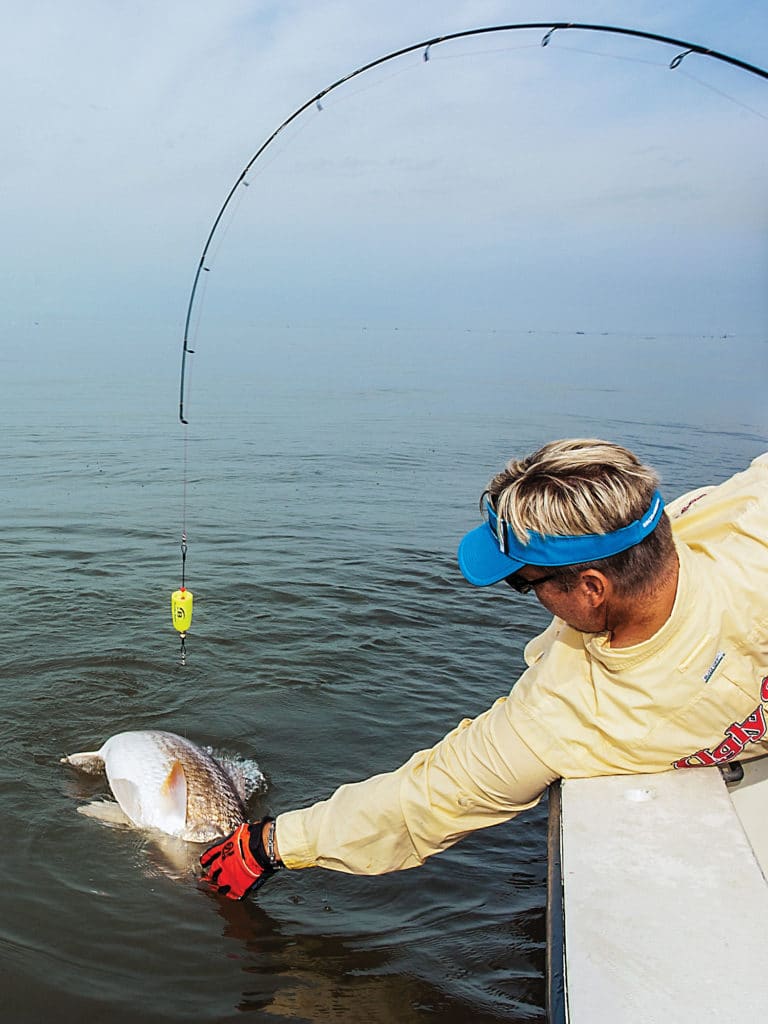
The Basic Popping Cork Rig
A popping cork is simply a 2- to 6-inch-long float made of cork, Styrofoam or hard plastic. Most are cupped at one end — to produce loud chugs and pops when the cork is pulled abruptly — and tapered and often weighted at the other for easier casting and to keep the streamlined end below the surface.
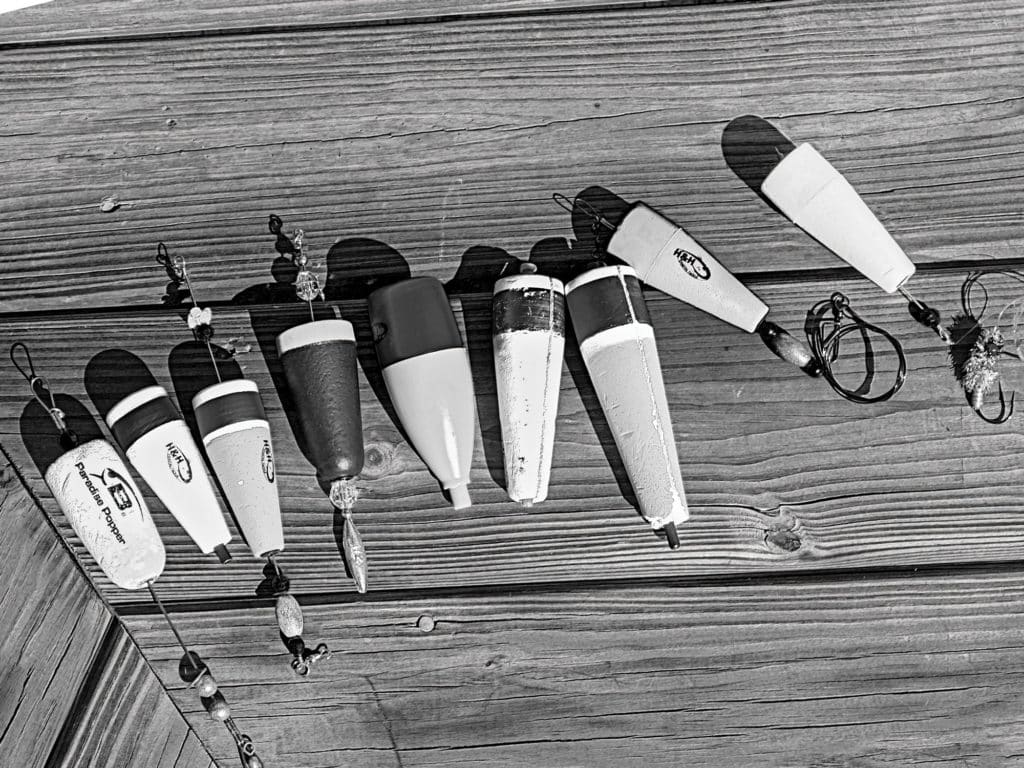
Fishing Corks Effectively
The theory behind the popping cork is that game fish are attracted to surface commotion because it simulates surface feeding or baits fleeing from predators. When game fish come to investigate the sounds, they see the bait or lure dangling below the cork and hit it.
The angler casts the popping cork to a spot where fish are likely to cruise or hang out, then he yanks hard on the rod a time or two to make the float pop loudly and splash on top of the water, while the bait or lure dangles enticingly several feet below.
After the initial pop, it’s best to pause the retrieve, much like when working a topwater chugger. Then pop the cork once or twice a few seconds later, and again pause for a moment before repeating the procedure as you slowly reel the rig across the likely strike zone.
If you retrieve beyond the strike zone without a response, crank the rig back to the boat and make another cast. When a fish hits, the popping cork is pulled under, so it serves double duty as a strike indicator. Then you quickly wind in the slack until you come tight and set the hook. If you miss the hook set, cast to the same spot. Otherwise, alter the distance or direction of every subsequent cast to cover more water.
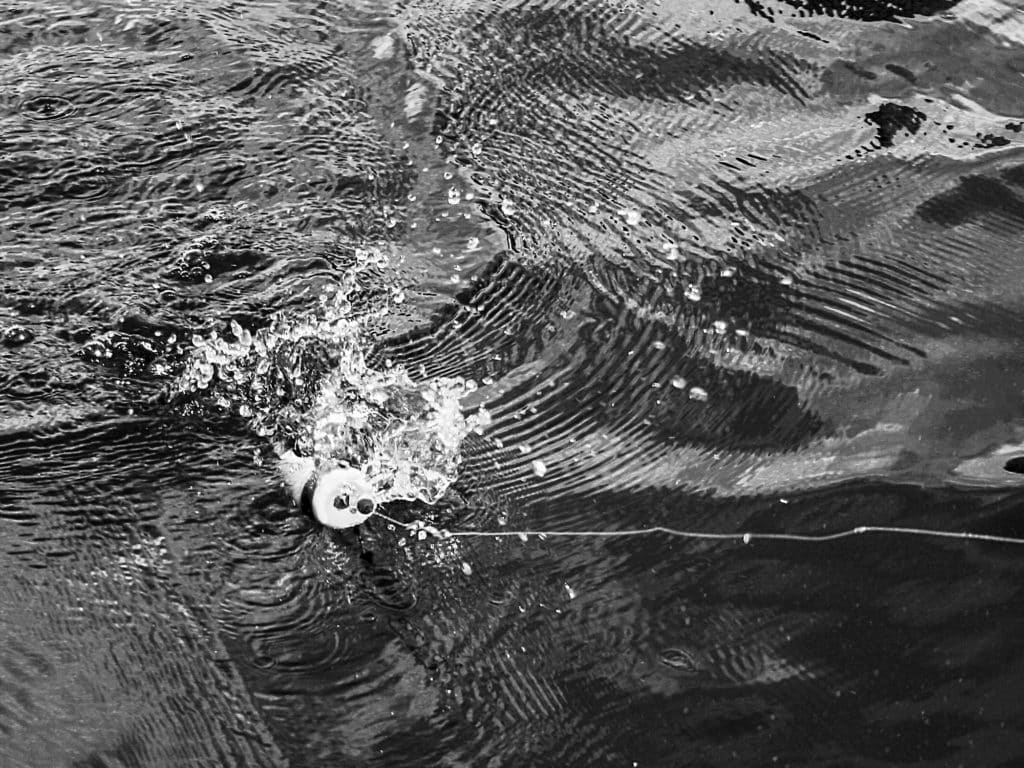
The Cadence of the Retrieve
The retrieve cadence and the loudness of the pops can be critical in attracting fish or turning them off. Big jacks, stripers and bluefish respond well to fat retrieves and deep chugs that push a lot of water and make the loudest noise.
In rough water or in turbulent rip tides, working a popping cork and jig combination hard and fast is usually the best tactic also. When searching for redfish or trout along troughs, channels or shorelines, a medium-speed, pop-and-stop cadence is often the ticket.
But when targeting tarpon or snook laid up around a mangrove point or lurking in the shadows of a dock at night, a popping cork chugged too hard or too fast will probably cause those persnickety fish to bolt. If instead they hear the cork only slosh the surface, tarpon and linesiders are more likely to come investigate.
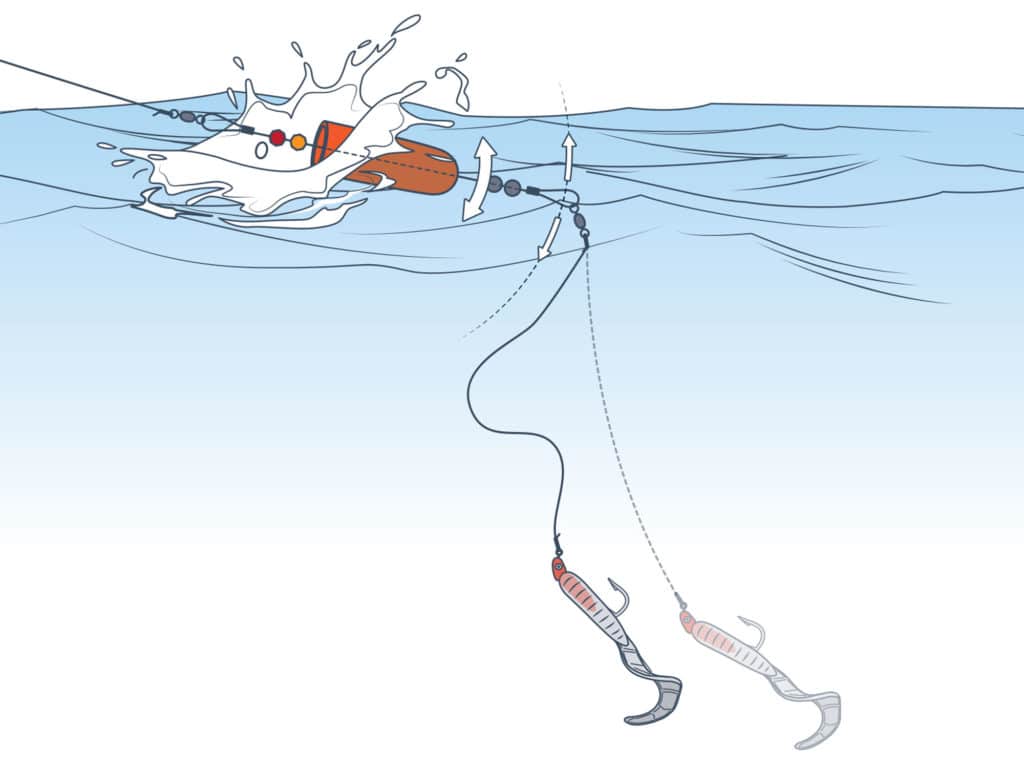
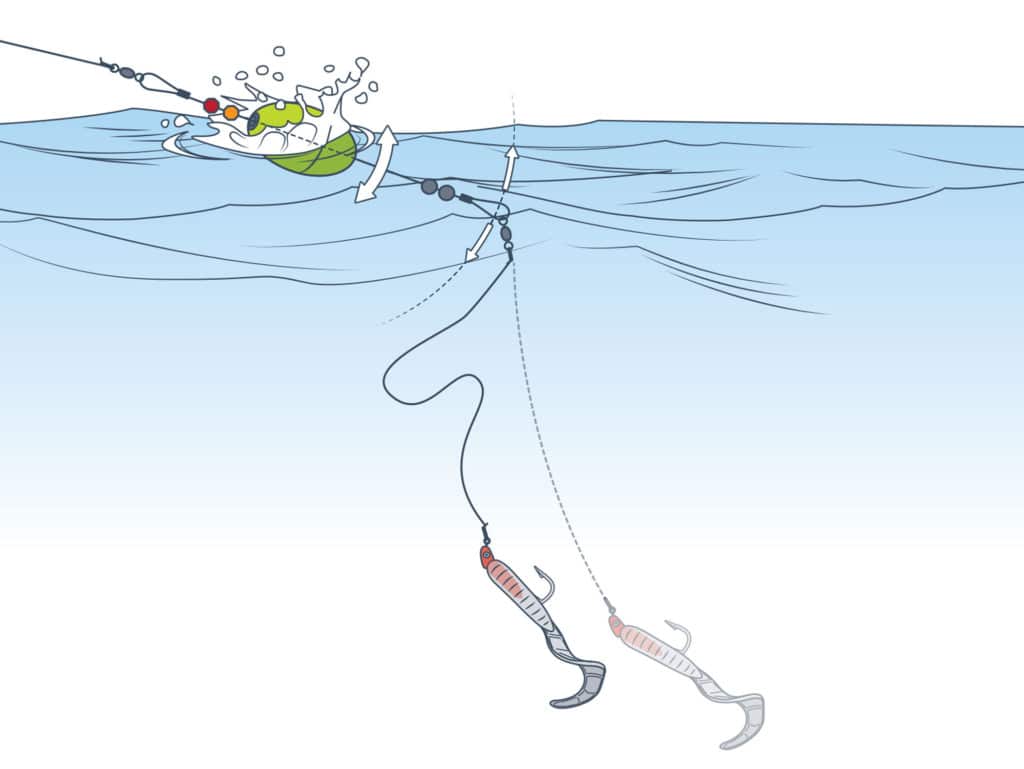
Match the Cork to the Situation
Matching the size of the popping cork to the task is important. Angling for big fish in big water, when the surface is rough, an oversize popping cork normally is best. A big cork casts well in a strong wind, plus it moves a lot of water, which is necessary to draw attention from game fish in a chop. A hefty popping cork is also a must when teaming it with a big lure or live bait required for the larger fish species.
By contrast, when fishing in calm, protected water no more than 3 feet deep, scaling down the size of both the popping cork and the lure or bait you suspend below it yields significantly better results.
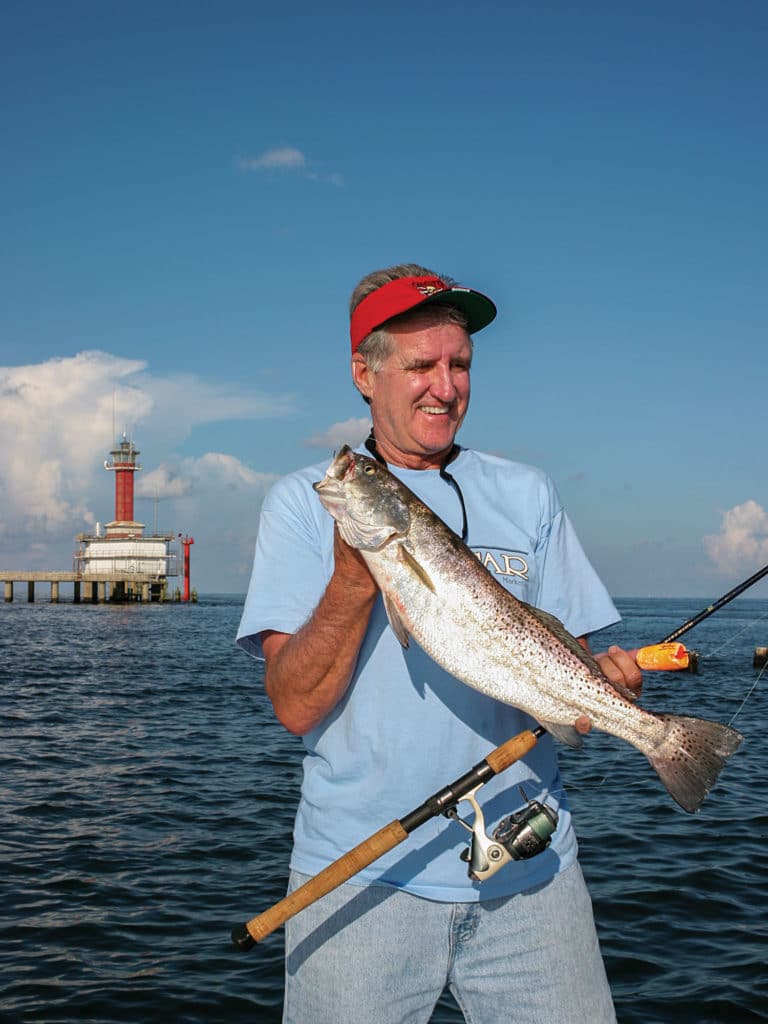
Live Baits and Lures
Popping corks are effective rigged with a variety of baits, both natural and artificial. Shrimp, mullet, menhaden, sardines, pinfish, pigfish and mud minnows are among the top live bait choices. Sometimes, especially when in areas with fast tides that impart action to the offering, dead baits and strip baits are used instead. As for artificials, the selection ranges from jigs and streamer flies to spoons and even sinking plugs.
At times multiple lures or multi-hook rigs fished below a popping cork can be deadly. A jig at the end of the leader with a lightweight streamer fly as a dropper can trigger strikes and produce double-headers on trout, redfish, school stripers and others.
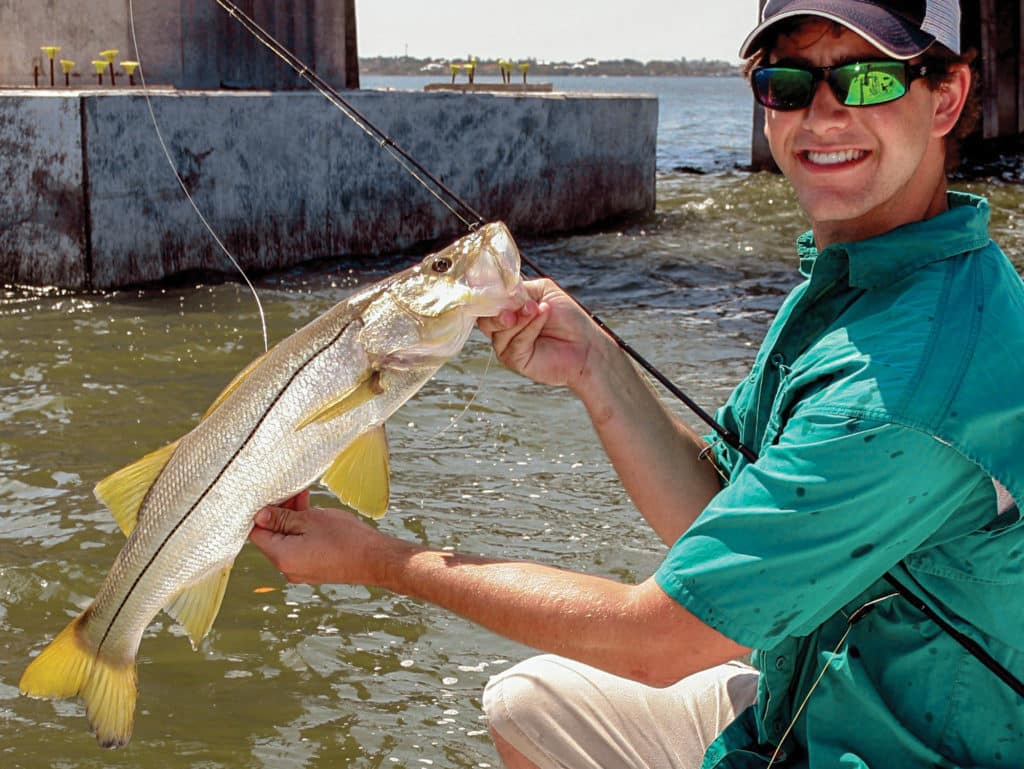
Where and When to Pop a Cork
Popping corks are most productive when used in calm water. They’re also superb for night fishing, or where fish relate to structure or cover and must be drawn from some distance to take a lure or bait.
Prime places to fish a popping cork include shell bars, sandbars, flooded grass flats, channel edges, bayou or creek mouths, mangroves roots and around docks, piers and bridge abutments. And popping corks also work their magic around oil rig structures, channel buoys and range markers.
Truth be told, the popping cork is a productive and versatile tool that most anglers underuse. Dig deep inside your tackle box, chances are you have a couple hiding there somewhere. I bet you find a few situations where popping corks help you land more fish.
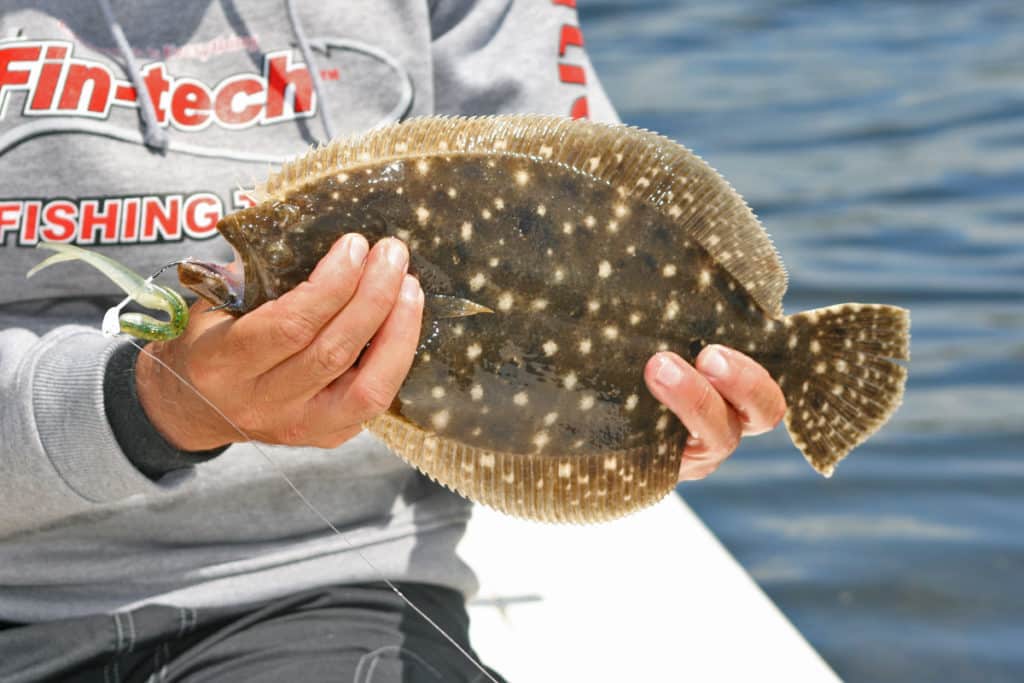
Best Popping Cork Tackle, Rigs and Bait
- Rod and Reel: Medium-heavy 7- to 8-foot rods, spinning or casting, help make long casts and the hard snaps over a wide arc necessary for best popping cork action and quicker hook sets. Braided line, with its minimal stretch, also helps matters.
- Leader: Monofilament works in most situations, but fluorocarbon (less visible and more abrasion resistant) performs better in clear water and around structure. A short trace of wire is wise when toothy critters like bluefish and mackerel are around.
- Lures and Baits: Shrimp, mullet, crabs, menhaden, sardines, pinfish. pigfish and mud minnows are top live baits. Jigs with curly tails and paddle tails, plastic shrimp and weighted swim baits are top lures. Bucktails and small single-hook spoons work well also.
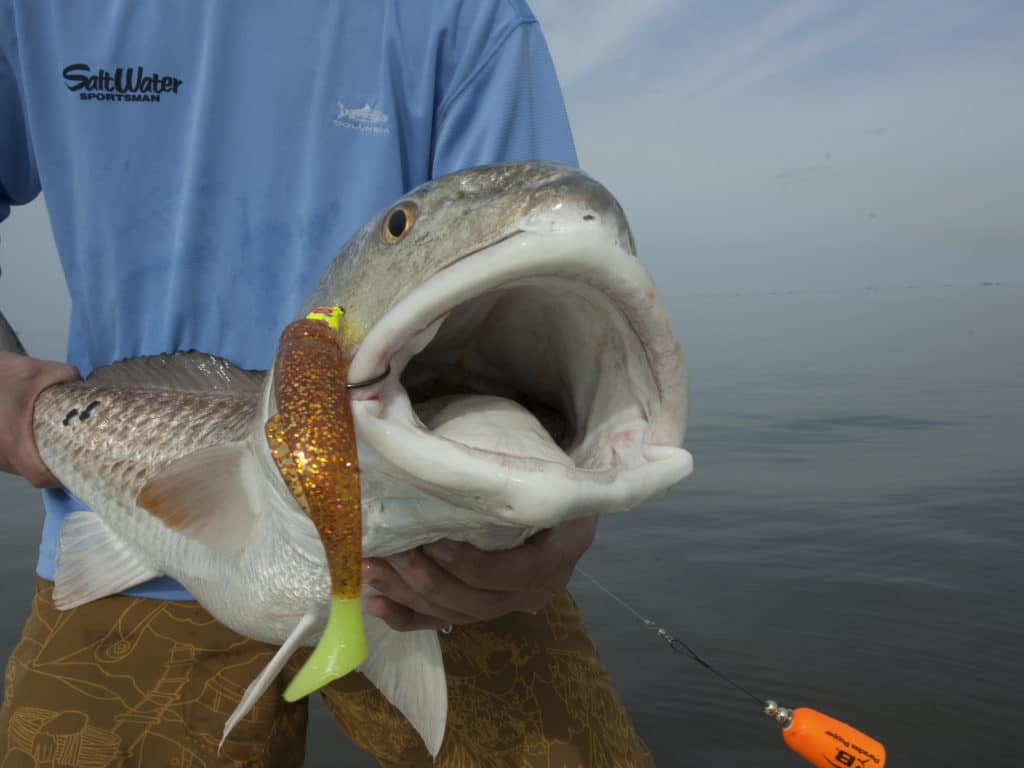
Cork Styles that Catch Fish
Popping corks come in a staggering variety of sizes, shapes, colors and configurations. Choose the size according to lure weight or bait size (big enough to easily suspend the offering). When it comes to color, the more subdued, like moss green, white or black, are best for clear, shallow water and skittish fish. Bright colors (hot pink, orange, lime green, red or yellow) are easier to see, and using a different color for every angler helps everyone keep track of their cork.
The least expensive popping corks just have a hole through the center from one end to the other. Some also have a slot cut lengthwise to easily insert the leader, which is then wedged in place with a plastic dowel. A good way to rig those is to run a short length of 30-pound monofilament through it so eight to 10 inches protrude from each end. Next, slip a small plastic bead and tie a barrel swivel at each end of the line. The plastic beads help prevent the swivels from jamming inside the opening or cracking and breaking the cork during fishing.
More modern designs have a length of wire or cable running through the center with loops or swivels on both ends. Some also have beads, sinkers and rattling devices to attract fish. Others are egg-shaped, lacking a cupped end, and rely on the rocking action produced by sliding weights to create noise and surface disturbance. Such corks may look a little clunky, but they’re easy to rig and to cast.
How to Rig a Popping Cork
A 2- to 4-foot leader with a bait or lure attached tied to the wire loop or swivel at the tapered end of the cork completes the rig. And no matter which popping cork style you chose, it’s how you work it that really makes a difference.
Classic Popping Corks
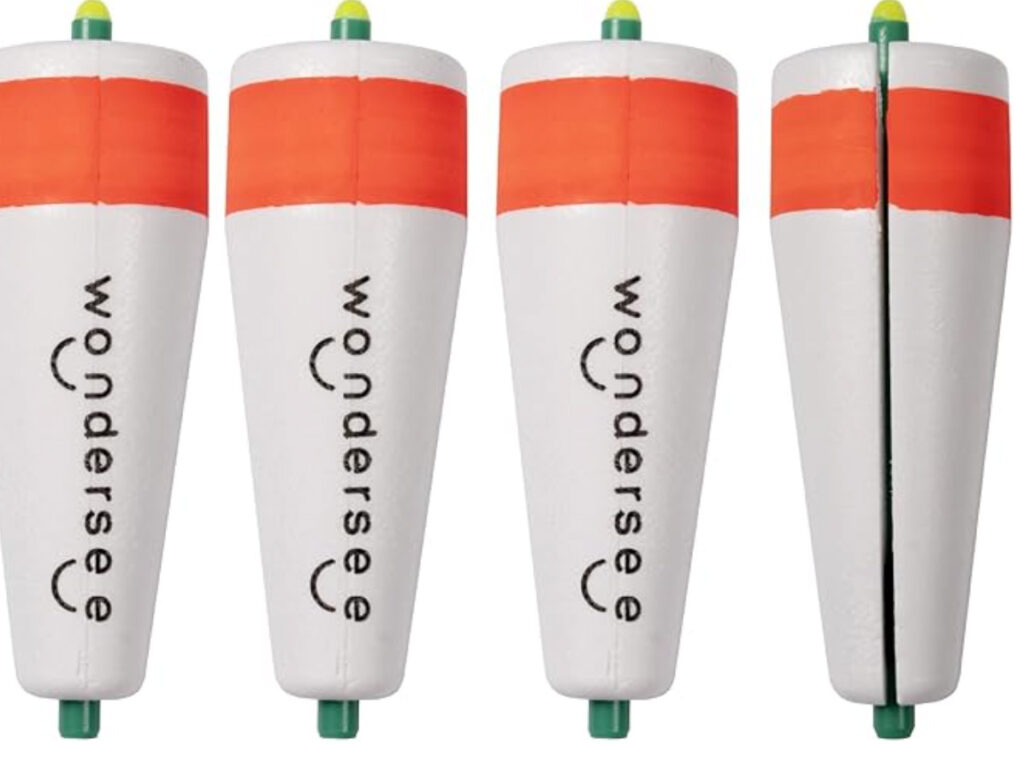
Wired and Cupped Popping Corks
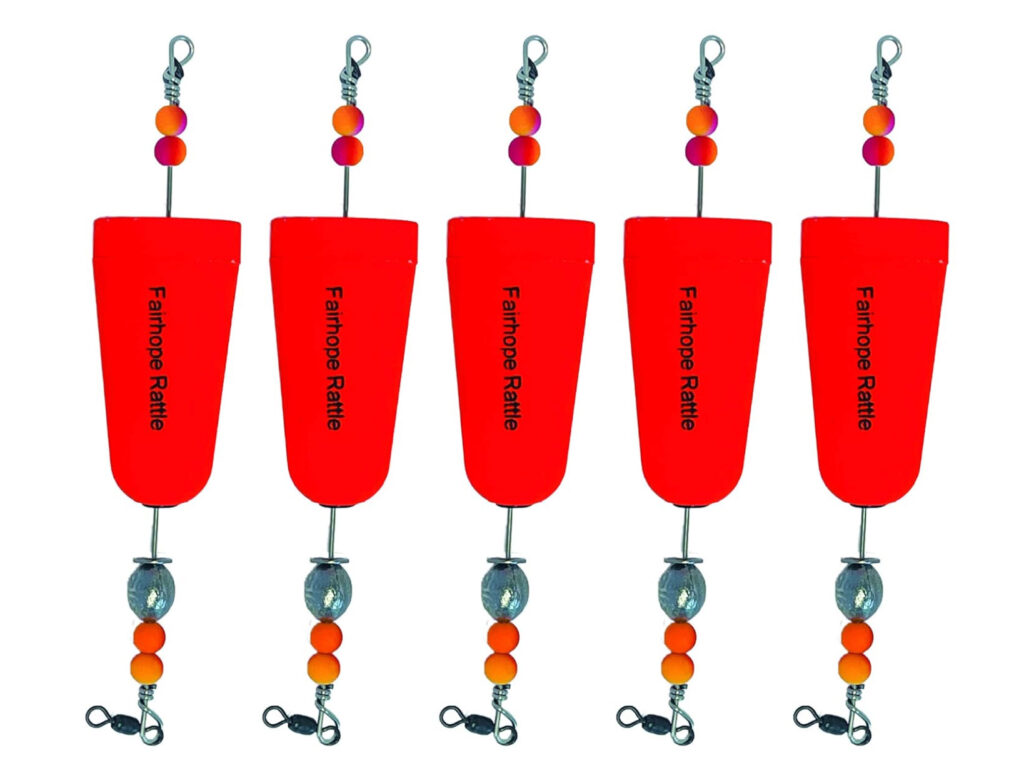
Oval-Shaped Popping Corks
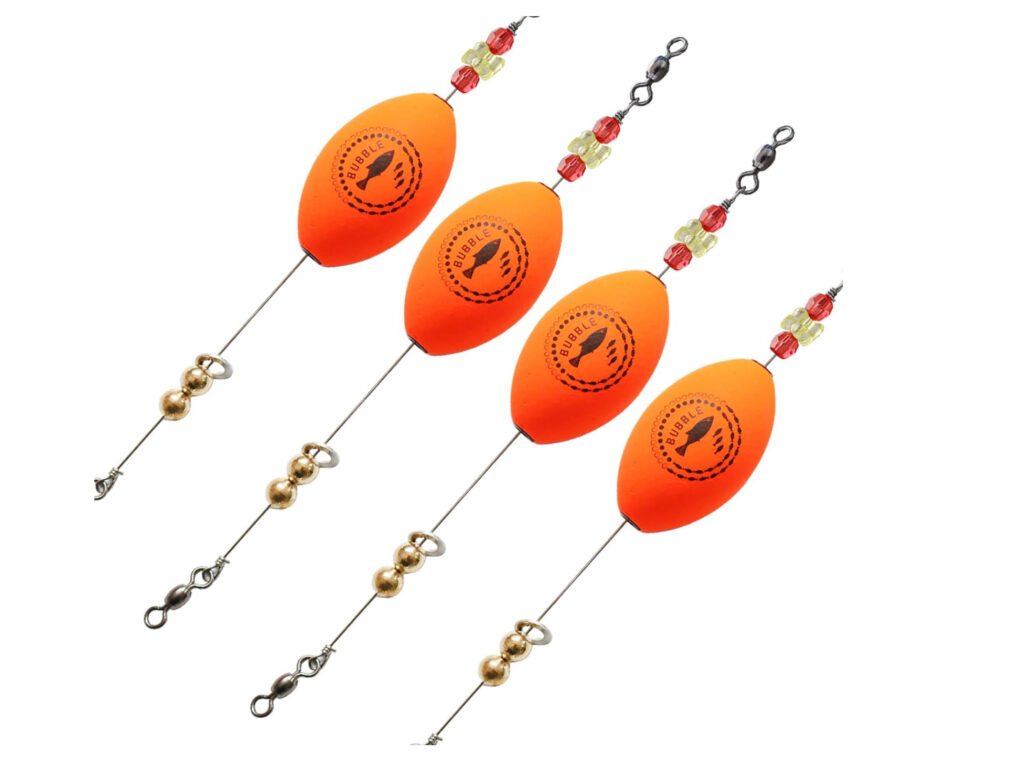
Slim Popping Corks (Cigar Floats)
